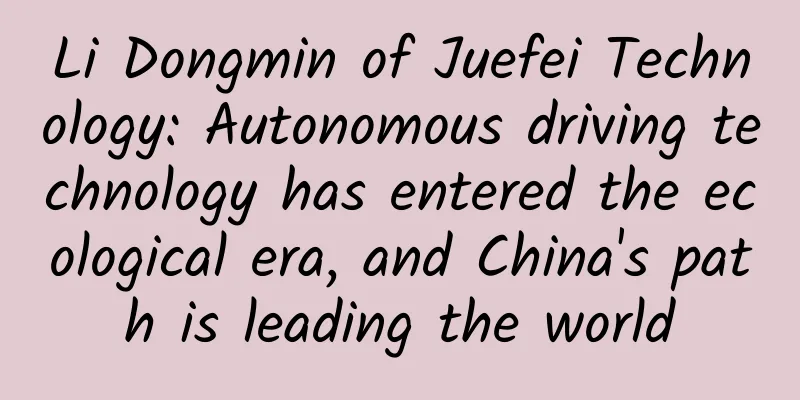The upgrading of new energy vehicle industry presents three major changes which will promote intelligent networking

|
The upgrading of the new energy vehicle industry will show three major changes, including the industrialization of new power batteries, the popularization of lightweight, and the promotion of intelligent networking. The latest data shows that in the first five months of this year, the year-on-year growth rates of production and sales of new energy vehicles in my country have doubled. A reporter from the Economic Information Daily recently interviewed several domestic automakers and experts and learned that the quality of new energy vehicles in my country is gradually improving, especially in terms of driving range, which has increased significantly compared with previous products, increasing consumers' confidence in purchasing. Looking ahead, with the gradual adjustment of new energy vehicle subsidy policies, further upgrading of new energy vehicle products and high-end technology will become a major trend, especially in the industrialization of new power batteries, lightweighting, and the promotion of intelligent networking, which are expected to usher in breakthroughs in the coming period. Comprehensive upgrade of product performance Data released by the China Association of Automobile Manufacturers recently showed that my country's new energy vehicle industry has maintained rapid growth this year. From January to May, the production and sales of new energy vehicles both reached 328,000 units, up 122.9% and 141.6% year-on-year, respectively. Among them, the production and sales of pure electric vehicles both reached 250,000 units, up 105.1% and 124.7% year-on-year, respectively. Experts analyzed that the substantial increase in sales was due to the continuous improvement of technology and product quality, which increased consumers' acceptance of new energy vehicles. It is reported that in recent years, with no significant increase in battery costs, the mileage of new energy vehicles has gradually increased from 120 kilometers to 200 kilometers, and then to 300 kilometers. The mileage of some new energy vehicles launched last year has even exceeded the 400-kilometer mark. At the same time, domestic automakers have been increasing their investment in the research and development of new energy vehicles in recent years and have made a series of breakthroughs. The Economic Information Daily reporter learned from a survey conducted at Anhui Jianghuai Automobile Group Co., Ltd. (hereinafter referred to as "JAC") that the company has systematically mastered the three core technologies of battery assembly, motor, and electronic control of electric vehicles, as well as key technologies such as energy recovery, drive and brake electrical coupling, remote monitoring, and electromagnetic compatibility. It is worth mentioning that JAC has made breakthroughs in the thermal runaway safety technology of high-energy-density battery packs and has formed a product forward development capability with international advanced levels. According to the relevant person in charge of JAC Motors, in terms of battery life, JAC Motors has completed product technology upgrades and developed a number of models with a battery life of more than 300 kilometers, such as the iEVA50 with a comprehensive working condition of 400 kilometers and a maximum battery life of 500 kilometers; the iEV7S with a comprehensive working condition of 301 kilometers; the iEV6E sports version with a comprehensive working condition of 310 kilometers and a maximum battery life of 390 kilometers. In response to changes in national policies and taking the lead in mass production, the iEV6E sports version has also become the first A00-class model in China with a maximum battery life of 390 kilometers. In addition, the iEV7S with a comprehensive working condition of 350 kilometers and the iEVA60 with a comprehensive working condition of 400 kilometers are already under development and will soon be available in batches. In addition to the substantial increase in driving range, as the market scale continues to increase, the level of charging piles and after-sales service is also constantly improving. In addition, the appearance of the products is becoming more and more beautiful, and people are becoming more and more accepting of new energy vehicles. According to Liu Kai, director of the Information and Certification Department of the Charging Alliance, the number of public and private charging facilities in various provinces, regions and cities is growing steadily. As of May 2018, the member units of the alliance reported a total of 266,231 public charging piles. From June 2017 to May 2018, the average monthly increase in public charging piles was about 8,273, and the year-on-year growth in May 2018 was 59.5%. Policy trends attract market attention So far, my country has introduced a number of strong support measures for the new energy vehicle industry. Driven by policies such as continued exemption of purchase tax for consumers who purchase new energy vehicles, implementation of dual-point management, lottery for car purchases, and exemption of parking fees and tolls for new energy vehicles in some places, the development of the new energy industry has entered the fast lane. The reporter learned from the industry that in order to promote the development of new energy vehicles, this year there may be a series of important policies issued in the new energy vehicle field around infrastructure construction and model innovation, so as to promote the reduction of new energy vehicle costs and the improvement of service quality, and further promote the expansion of new energy vehicles under the new situation.
Some experts said that this also means that a large number of pure electric vehicle companies with backward technology will receive a significant reduction in the amount of state subsidies. The implementation of the new policy will effectively avoid the industry's low-level blind expansion, and ultimately new energy vehicle companies without technological content will be eliminated faster. A relevant person in charge of the China Association of Automobile Manufacturers told reporters that the new subsidy policy may temporarily have a certain impact on the sales growth of new energy vehicles, but overall it is conducive to the upgrading of new energy vehicle products and high-end technology, and promote the healthy development of China's new energy vehicle industry. In addition, some experts believe that with the gradual adjustment of the subsidy policy for new energy vehicles, and the further improvement of national motor vehicle emission standards and environmental protection requirements, the conditions for the introduction of carbon trading policies are becoming more and more complete. Wan Gang, vice chairman of the National Committee of the Chinese People's Political Consultative Conference, said at the 2018 China Automotive Forum held not long ago that after the adjustment of fiscal subsidies, it is necessary to study corresponding policy measures, establish a long-term operating mechanism, and ultimately realize carbon trading. In this regard, industry insiders said that the carbon trading policy, together with the "Limits on Passenger Vehicle Fuel Consumption", "Calculation Methods for Passenger Vehicle Enterprise Average Fuel Consumption", and "Interim Measures for the Management of Passenger Vehicle Enterprise Average Fuel Consumption", will form a complete system of "limit standards + calculation methods + reward and punishment measures + points trading". The implementation of the carbon trading policy will further guide the healthy and sustainable development of the new energy vehicle industry. Future industrial development may show three major trends It is generally believed in the industry that the development of my country's new energy vehicle industry may show three major trends in the future. First, market competition has intensified. On the one hand, mainstream new energy vehicle companies have accelerated the pace of launching new products. For Chinese brands, JAC Motors launched 5 to 6 new models in 2018, and BYD, BAIC New Energy, Geely, GAC, Chery and others are also accelerating the launch of new products. For foreign companies, Volkswagen, Nissan, Toyota and other foreign companies have also accelerated the pace of launching new energy vehicle products in China. In fact, the enthusiasm of major multinational automobile companies for new energy vehicles is very high. Dieter Zetsche, Chairman of the Board of Directors of Daimler AG and Global President of Mercedes-Benz Automobile Group, said that in the future, the group will gradually realize the electrification of its overall products, and will provide at least one electric model in each car series, and there will be more than 50 electric vehicle products in the future. According to Mullen, CEO of Volkswagen Group, new energy vehicles will become the focus of Volkswagen Group's future development. BMW Group also said that it will launch a general offensive against electric vehicles. In addition, in China, more than ten companies have obtained the qualification to produce pure electric passenger vehicles in 2017. Experts said that some Internet companies are full of hope, confidence and passion for new energy vehicles. They are the new recruits of the new energy vehicle industry and also catfish, injecting vitality into the new energy vehicle market and becoming a new force for the accelerated development of the industry. Industry insiders said that the intensification of competition will promote the maturity of technology, and the research and development costs will gradually decrease, allowing companies to focus on improving technology and reducing prices, so that China's new energy vehicles can truly form a healthy growth. At the same time, the diversified development model gives local brands the opportunity to compete with international brands, and can even become a springboard for Chinese auto brands to go global. Second, the technology upgrade is accelerating. A person in charge of the technical department of a car company told reporters that there will be three major changes in the technology upgrade of new energy vehicles in the future. The first is that new power batteries will be industrialized by 2020. The second is lightweighting. The industry will gradually form a vehicle lightweight technology platform based on aluminum alloys and composite materials, promoting the formation of technology development capabilities and industrial chains. The third is intelligent networking. The industry will gradually realize the industrialization and application of driving assistance technology and form some autonomous driving technology platforms. Third, independent brands will increase international cooperation. Industry insiders said that with the deepening of the "Belt and Road" initiative and international capacity cooperation, the international development of China's automobile industry has also ushered in an opportunity. As a pillar industry of the national strategy, new energy vehicles should seize the favorable opportunity to strengthen international cooperation. In fact, some Chinese brands have already begun to take substantial steps in international cooperation on new energy vehicles. Recently, the first mass-produced new energy vehicle model of JAC Volkswagen, the Sihao E20X, officially rolled off the assembly line. It is reported that this is a pure electric SUV model, equipped with JAC's self-developed and most advanced liquid-cooled battery safety control technology in the industry, with a comprehensive operating range of more than 300 kilometers, and further enhanced configurations such as the voice system of artificial intelligence technology. During the investigation, the Economic Information Daily reporter learned that the model was built based on JAC's new energy vehicle technology framework, integrating the design essence of the SEAT brand and following the quality management process of the Volkswagen Group. It can be said to be another fruitful result of the Sino-German manufacturing cooperation. An Jin, chairman of JAC Motors, told reporters that the successful roll-off of the first product marks that the cooperation project between JAC and Volkswagen has achieved phased results. JAC Volkswagen will take this as an opportunity to continue to integrate advantageous resources and continuously improve product quality and output. As a winner of Toutiao's Qingyun Plan and Baijiahao's Bai+ Plan, the 2019 Baidu Digital Author of the Year, the Baijiahao's Most Popular Author in the Technology Field, the 2019 Sogou Technology and Culture Author, and the 2021 Baijiahao Quarterly Influential Creator, he has won many awards, including the 2013 Sohu Best Industry Media Person, the 2015 China New Media Entrepreneurship Competition Beijing Third Place, the 2015 Guangmang Experience Award, the 2015 China New Media Entrepreneurship Competition Finals Third Place, and the 2018 Baidu Dynamic Annual Powerful Celebrity. |
<<: The rise of the Internet of Things, can it really make life better?
>>: Honda joins Baidu's Apollo platform to make self-driving cars a reality
Recommend
IPv6 addresses are running out, and operators are launching IPv6 pilot projects
As the global IPv4 addresses are about to run out...
Understand what product operation is in 10 minutes!
What is operation ? All means used to connect use...
Listen to stories and learn Swift series - Xiao Ming and the red envelope (optionals - optional type)
[[143647]] The naughty child Xiao Ming and his mo...
Train tickets for the first day of the Dragon Boat Festival holiday are on sale today. Travel healthily and do not relax your efforts in epidemic prevention.
Dragon Boat Festival is coming This Friday will s...
Why is the silver bracelet ineffective in testing poison?
Recently, a man in Yibin, Sichuan, picked mushroo...
Troubleshooting starts with error code 406
background A while ago, I was suddenly informed b...
Qiu Ruide: How to modify and improve the content of SEO optimization?
The site hopes to be successful without quality c...
Alipay APP changes its icon: 2021 "Collect Five Blessings" is here, with more ways to play this year
There is less than a month left until the 2021 Sp...
Did you have a boring dream last night? Don’t worry, there may be a way to share your dreams
© Armada International Leviathan Press: Sharing a...
These foods have no expiration date, don’t throw them away foolishly!
This article was reviewed by Pa Li Ze, chief phys...
Lanzhou mini program production and customization development, what are the processes for developing a mini program?
After the fifteenth day of the first lunar month,...
How to Develop the Next Generation of Highly Secure Apps
[[164448]] One of the great benefits of the mobil...
Have a healthy new year! Let’s check the “small hidden dangers” in the refrigerator first
During the Chinese New Year, many families have t...
Drive.ai completes $50 million financing, Andrew Ng joins board of directors
Drive.ai, a rather mysterious self-driving startup...
The history of medicine began with stealing corpses and performing dissections in public
In the Middle Ages, Western medicine was largely ...









